Mystacidium capense
| Botanical Name | Mystacidium capense |
|||||||||||
| Family | Orchidaceae - The orchid family. |
|||||||||||
| Pronunciation | mis-tah-SID-ee-um ka-PEN-see |
|||||||||||
| Common Name(s) |
IsiZulu: iphamba
|
|||||||||||
| Plant Group |
|
|||||||||||
| Plant Size |
|
|||||||||||
| Position |
|
|||||||||||
| General Information |
|
|||||||||||
| Specific Information | Mystacidium capense is an epiphytic plant orchid. The dark green strap-shaped leaves, of which there are 4 to 10, are held on short stems and grow up to 13 cm in length. The thick roots are grey with with whitish streaks and become very long - quite out of proportion to the size of the plant. The flowers, being white and strongly scented at night, are thought to be pollinated by moths, especially the Hawkmoth. Once established, the plants can tolerate light frost. This plant makes a fascinating point of interest when grown on a tree in the garden. An epiphyte is a plant that grows on another plant for physical support but obtain their nutrients from rain and from debris on the supporting plants. Epiphytes are in no way parasitic as they take no nutrients from the host tree. |
|||||||||||
| Ad Break | ||||||||||||
| Flowers | ||||||||||||
| Description | satiny textured, about 20 mm in diameter, with two petals, three sepals, a lower lip and a 40 to 60 mm spur, in numerous loose sprays |
|||||||||||
| Season |
|
|||||||||||
| Colour |
|
|||||||||||
| Growth Rate |
|
|||||||||||
| Plant Uses |
|
|||||||||||
| Distribution and Habitat | in South Africa along the eastern parts of the Eastern Cape, Kwazulu-Natal and Mpumalanga, as well as Swaziland, in dry woodland, thorny scrub and coastal scrub, often on Acacia trees as well as Citrus and Cypress species |
|||||||||||
| Planting Suggestions | Mature plants should preferably be attached to smooth-barked trees. They can be gently tied on using strips cut from nylon srockings. The plants should be lightly watered until new roots appear and the plant has attached itself firmly to the bark, after which the retaining strips can be removed. Liquid fertilizer can be applied in spray form from time to time. Plants can also be grown on a sturdy piece of bark, driftwood or section of weathered branch and hung or tied in a shady place. If the plant is kept under shelter it will need to be regularly watered. The application of fertilizer would especially benefit these plants as they are not able to gather the same amount of nutrients as they do when attached to a tree. The dust-like seeds are dispersed by wind or simply rise up on warm air draughts, where they land on mossy branches. In nature they germinate only where specific fungus species are present. The fungi provide the sugar content needed, which is lacking in the seeds. Artificially grown seeds must be germinated under sterile laboratory conditions.
|
|||||||||||
| Lorraine's Garden Notes | Although I found many overseas references to this plant needing a fairly constant supply of water or misting, those growing naturally here in the Albany area of the Eastern Cape survive in hot and frequently very dry conditions - at times there is no rain for four or more weeks at a time. |
|||||||||||
| Medicinal Uses | Traditionally the plant is used as a protective and love charm. |
|||||||||||
| Ad Break | ||||||||||||


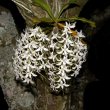

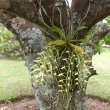
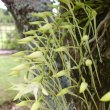
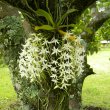
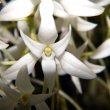

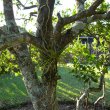


Discuss this plant
Share knowledge, ask a question or give an experience.